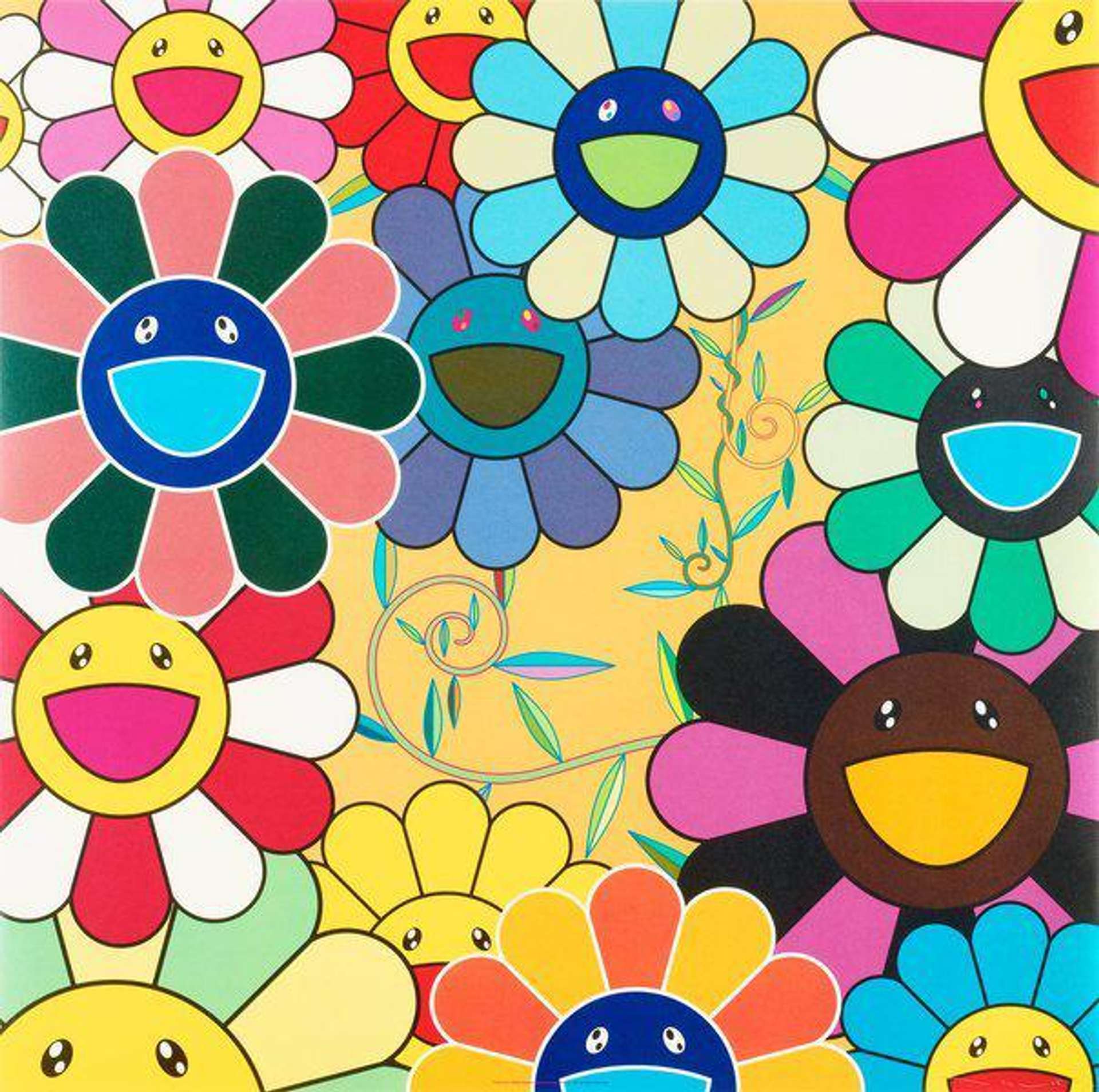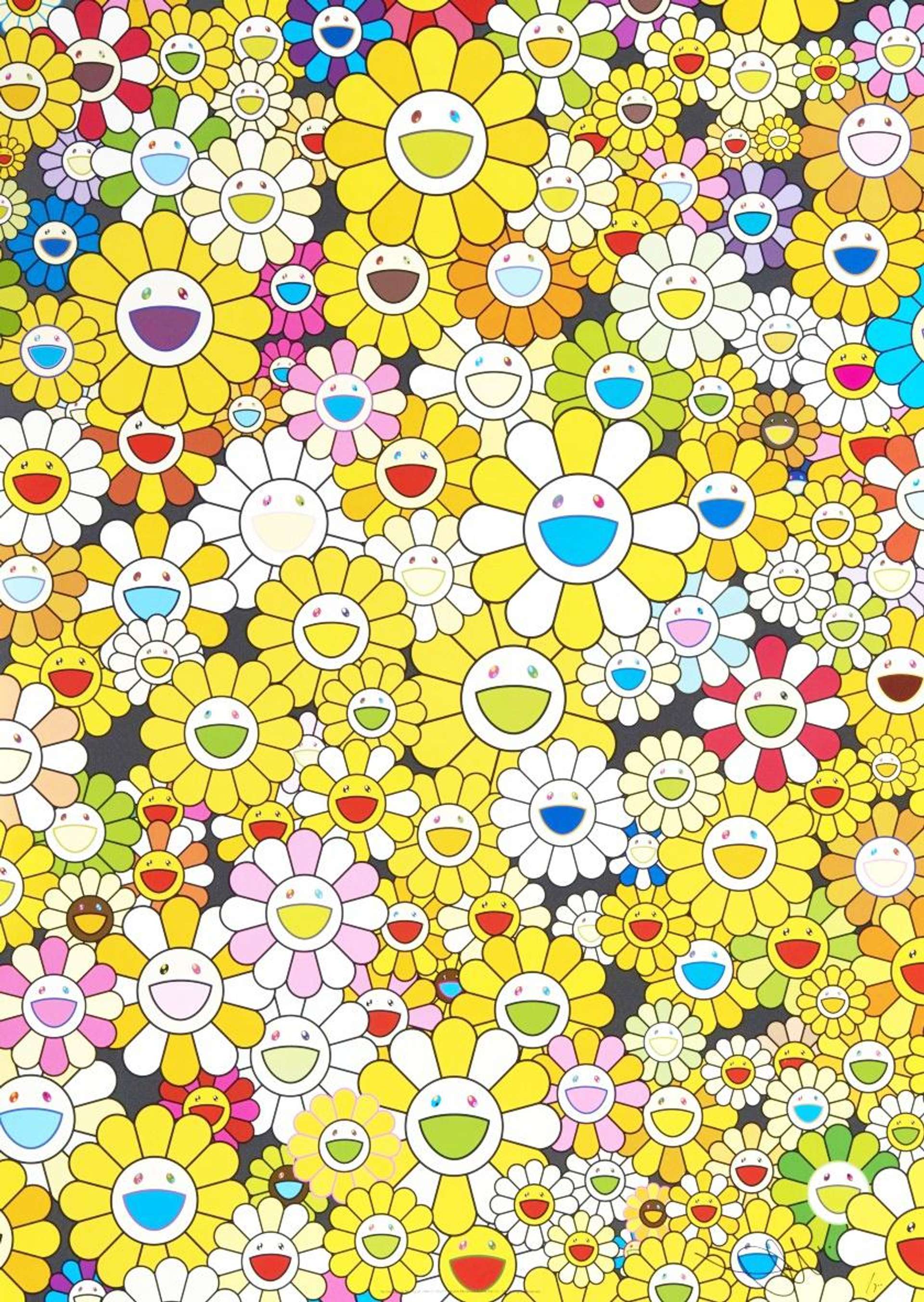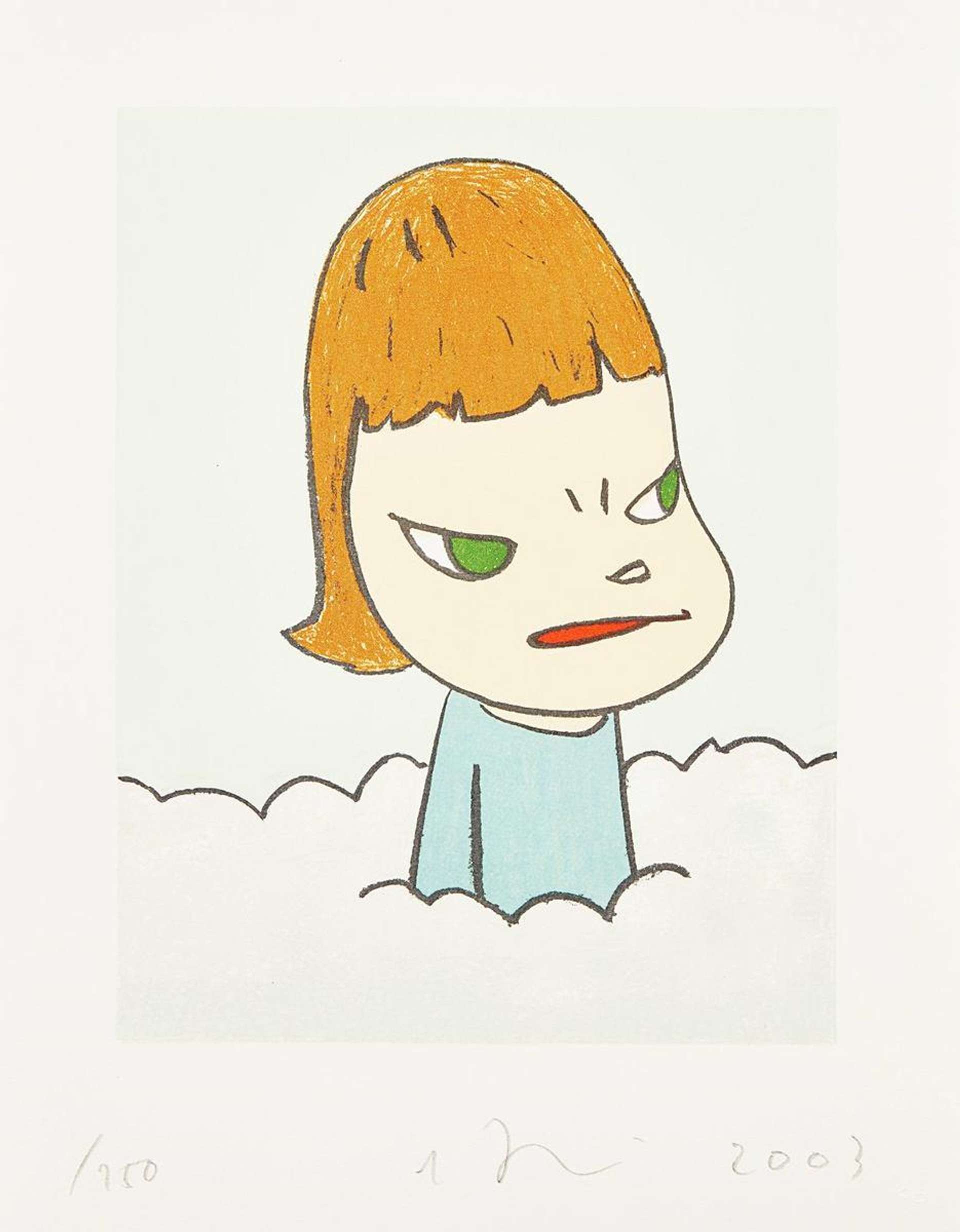A Guide to Japanese Pop & Contemporary Art: Yayoi Kusama, Takashi Murakami, and Yoshitomo Nara

 Pumpkin (YY) , Kusama 231 © Yayoi Kusama 1996
Pumpkin (YY) , Kusama 231 © Yayoi Kusama 1996Market Reports
In recent decades, Japanese pop and contemporary art have emerged as significant forces in the global art scene, captivating collectors, curators, and enthusiasts alike. This vibrant art movement encapsulates Japan's dynamic cultural history, blending tradition and modernity. Among the most influential artists in this realm are Yayoi Kusama, Takashi Murakami, and Yoshitomo Nara, whose groundbreaking work has earned them international acclaim and commercial success. Here, we will explore the world of Japanese pop and contemporary art, focusing on the contributions of these three artists, and offering tips for collecting and investing in Japanese art. With MyArtBroker's platform, you can discover and acquire remarkable pieces of Japanese art to enrich your collection.
 Thunderstorm Beneath The Summit © Katsushika Hokusai c. 1830-32
Thunderstorm Beneath The Summit © Katsushika Hokusai c. 1830-32Japanese Art History and Culture
Japanese art is deeply rooted in the country's rich cultural historical heritage, spanning from the Jomon period to the present day. Throughout the centuries, Japan was often isolated from much of the world, not only due to its geographical location but also thanks to an isolationist policy implemented from the 1600s to the 1800s. This separation enabled artists to develop very distinct styles and techniques, uninfluenced by outside religion, external politics or close contact with other cultures, especially the West. However, once Japan began opening up, artists were quick to embrace new ways of creating, and Japanese art has evolved significantly over time.
The emergence of its pop and contemporary scene in the 20th century marked a significant shift, as artists began to integrate elements of Western art and popular culture into their work. A key aspect of Japanese aesthetics is the harmonious balance between traditional and modern elements, a fusion that is a reflection of the country’s complex history and its ability for adaptation to change. Japanese design principles have played a significant role in shaping the aesthetics of its art, with elements such as minimalism, line work and the celebration of nature having been incorporated by notable artists. Japanese subculture has also had a profound influence on visual art, with many contemporary artists drawing inspiration from aspects of pop culture such as manga, anime and street fashion. These elements have become integral to the Japanese art scene, creating a distinctive and colourful visual language that sets it apart from other contemporary landscapes and that is especially visible in the works of Kusama, Murakami, and Nara.
Japan has also invested a lot on developing its burgeoning art scene, and has become home to many celebrated museums and galleries. Many of these are specifically dedicated to contemporary art, such as the Mori Art Museum and The National Museum of Modern Art in Tokyo, the 21st Century Museum of Contemporary Art in Kanazawa, and the Yokohama Museum of Art. Art criticism has also played a vital role in shaping discourse as enthusiasts, critics, curators and scholars continue to interpret the works of various Japanese artists who seamlessly blend traditional and modern design elements and create visually striking pieces.
 Image © Lit Hub / Yayoi Kusama
Image © Lit Hub / Yayoi KusamaYayoi Kusama: The Queen of Polka Dots
Yayoi Kusama, born in 1929, is a trailblazing artist known for her immersive installations, sculptures, and paintings. Kusama is inspired by Conceptual Art, and her signature style revolves around the use of repetitive patterns and vibrant colours, which show influences from Pop Art and Abstract Expressionism. Her notable works include the Instagram-famous Infinity Mirror Rooms – mesmerising spaces filled with mirrors and LED lights that create a seemingly endless expanse – and her Pumpkins, which she claims are “the most humorous of vegetables.”
Much has been said about Kusama’s mental state and how it has shaped her art. Having endured a large amount of childhood trauma at the hands of parents who admonished her artistic aspirations, she moved to New York in 1957 after Georgia O’Keeffe advised her to. Although she attracted the praise of artist and critic Donald Judd and the admiration of painter Frank Stella, it would take many decades for her work to achieve the fame it has today. In the meantime, she watched male artists plagiarise her and achieve success, a fact that negatively impacted her health significantly. After a few years of staging avant-garde shows that criticised an elitist art world, during which she suffered periodical suicide attempts, Kusama checked herself into a hospital working with art therapy in 1977. She has lived there ever since.
Her work began to be reevaluated by critics in the late 1980s, beginning with a retrospective exhibition at the Center for International Contemporary Arts in New York. In 1993, critic Akira Tatehata advocated for her work to represent Japan at the Venice Biennale, where it was received with resounding approval. This marked a turning point for her career, and in the past few decades Kusama’s work has been exhibited in renowned institutions such as the Tate Modern, the Museum of Modern Art (MoMA), and the Hirshhorn Museum. With the help of social media she has crossed into pop culture, notably launching a partnership with Louis Vuitton in 2023. She is the world’s highest-grossing living female artist, with her works often selling for millions.
 Image: Citlalivargasss, CC 4.0, via Wikimedia Commons / Artwork © Takashi Murakami
Image: Citlalivargasss, CC 4.0, via Wikimedia Commons / Artwork © Takashi MurakamiTakashi Murakami: From Superflat to the Art World
Takashi Murakami, born in 1962, is a contemporary artist whose work blurs the line between high and low art. Widely associated with the Superflat Movement, Murakami’s style is inspired by manga, anime and consumerism, and combines traditional Japanese art with contemporary pop culture. He is noted for creating characters who appear often in his work, the most recognisable ones being the smiling flower and Mr. DOB, both of which have become synonymous with his brand. Their recognisability is no accident, as Murakami said he studied cartoons such as Mickey Mouse and Hello Kitty as inspiration for his characters. Clearly he was successful in creating an impact, considering his works often sell for millions of pounds.
An academically-trained artist, he eventually became frustrated with the constraints of that world and began experimenting more. This inspired his early works, which are full of social criticism and satire. In 1994 he moved to New York, where he became inspired by contemporary Western artists such as Jeff Koons. Upon his return to Japan he published his theories for the Superflat Movement, but chose not to describe it in too much detail so as to not constrain the movement. His manifesto was influential, eventually reaching the United States with the SoFlo Superflat Movement, mostly based in Florida. Since then, he has remained relevant in the art world and beyond, often embracing modern technology to stay at the forefront of innovation.
Overall, Murakami is a master at studying and infiltrating any market. He has collaborated with various high-profile brands and celebrities, such as Louis Vuitton, Billie Eilish and Kanye West, further expanding his global influence. Outside of his great commercial success, his work has been showcased in institutions like the Guggenheim Museum and the Museum of Contemporary Art in Los Angeles. Murakami further opened his own gallery, Kaikai Kiki in Tokyo in 2006. It displays the artist’s own works, as well as showcasing the works of up-and-coming artists, and intends to “imbue art itself with a new social value.”
Murakami’s social relevance is reflected in the value appreciation that his art experiences. Even in the secondary market, his works often fetch high prices, making him one of the best artists to invest in.
Yoshitomo Nara: The Cute and the Creepy
Yoshitomo Nara, born in 1959, is a Japanese artist renowned for his paintings, sculptures, and drawings featuring children who are seemingly innocent yet enigmatic. Nara's work is influenced by a variety of sources, including Japanese manga, Western punk rock, and traditional Japanese art. His distinct style conveys a sense of nostalgia and introspection, especially reflecting kawaii culture, as well as social and cultural commentary. Compared to the previous artists mentioned, Nara has a distinctly muted colour palette and a more minimalist approach. His figures seem simple yet are deeply expressive, conveying a range of emotions ranging from joy to suspicion.
Nara has described his influences as wide-ranging, beginning from childhood memories influenced by art, music and literature, and constantly evolving to reflect his life experiences. Deeply inspired by rock music in the 1970s and 1980s, his art is notable for blending elements of Western culture with traditional Japanese aesthetics. Having had a largely independent childhood, his child-like figures reflect that self-reliant streak, and rely on painting theory to express that. By layering and removing colours, Nara ensures “that what remains in the end is only the most earnest part that could not be pared away.”
His work has been widely appreciated worldwide, and he has held over 40 solo exhibitions since 1984. Outside of a commercial setting, his work has been exhibited in esteemed institutions such as the LACMA in Los Angeles, the MoMA in New York and the Centre Pompidou in Paris. Within the art market, his work fetches high-prices at sales, often reaching dozens of millions of pounds.
The Japanese Art Market
The influence of Japanese pop and contemporary art has extended far beyond its borders, with artists like Kusama, Murakami, and Nara gaining international recognition. The global appeal of Japanese art has led to increased visibility for other contemporary Asian artists, creating opportunities for cross-cultural exchange and dialogue. Additionally, the incorporation of Japanese subculture elements and aesthetics has inspired artists worldwide to experiment with new styles and techniques.
The Japanese art market has experienced substantial growth in recent years, making it an attractive investment opportunity for collectors. Factors driving this spike include increased interest in pop and contemporary art, the global popularity of artists like the aforementioned and a growing number of international exhibitions and collaborations. As a result, Japanese fine art has become more accessible and appealing to a broader audience, attracting all sorts of collectors to the market.
When considering investing in Japanese art, it is essential to research the artist and their body of work to understand their significance within the art world. Pay close attention to the artwork's condition, provenance, and rarity, as these factors can influence its value. Diversify your collection by acquiring works from different artists and periods to create a well-rounded portfolio. Consult with experts and art advisors, like those at MyArtBroker, to make informed decisions and stay up-to-date with market trends.
 Image © Nikkei Asia / Art Space in Tokyo
Image © Nikkei Asia / Art Space in TokyoThe works of Yayoi Kusama, Takashi Murakami, and Yoshitomo Nara showcase the versatility, popularity and talent of Japanese artists. By investing in them, collectors can enrich their collections and partake in a dynamic and evolving art movement that continues to appeal to audiences worldwide.
Japanese pop and contemporary art offer a fascinating glimpse into the country's rich cultural history and evolving artistic landscape. Whether you're a seasoned collector or a newcomer to the market, Japanese art promises to be an enriching and rewarding investment, and MyArtBroker's services provide a convenient platform for collectors to discover and acquire exceptional pieces of Japanese art.






